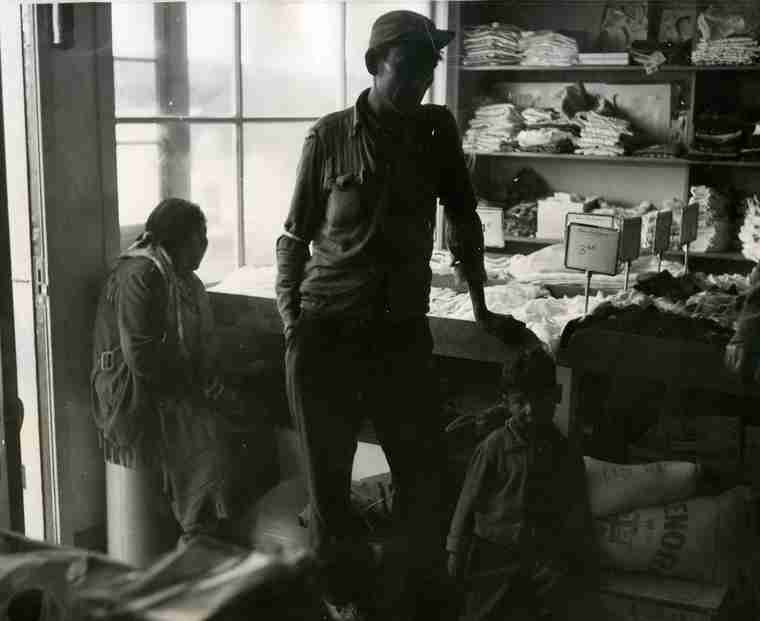- The Fur Trade era predated the settlement of Canada – origins of the fur trade date back to the 1600s but Fur Trade in the West began around 1715. The popularity of Furs in Europe, such as the Beaver felt - Top Hat, fueled European economic ventures in North America during this time.
- On one side, there were the French and British fur traders who supplied European trade goods such as beads, pots and kettles, blankets, muskets/guns, and various other goods.
- On the other, were Indigenous fur traders, such as the Cree, Assiniboine, and Metis (whose ethnogenesis stems from the marriages of Indigenous women and French Fur Traders). In turn, they supplied furs to trade, as well as environmental and geographical knowledge, such as routes, waterways, etc.
- European trade relied heavily on the knowledge, labour, and good will of Indigenous peoples in order to navigate land, animal species, and to achieve prosperity in their ventures. Ultimately, the relationships between Europeans and Indigenous peoples during the 18th and early 19th centuries of the Fur Trade were based on the recognition that cooperation was key to mutual benefit.
- This mutual recognition can be seen in Peace and Friendship treaties of the era, trading ceremonies, standardized prices for goods, and marriages between French traders and Indigenous women that resulted in dynamic kinship networks. This is not to say that conflict and violence did not occur during the Fur Trade Era, but neither was it categorized by Europeans wanting to displace Indigenous peoples from their land and resources, as seen through Settler Colonialism.
- Gradually, the relationship between European traders and Indigenous peoples began to shift. By the 1800s, The British Hudson’s Bay Company in the West had a monopoly on furs in the Western Fur Trade – primarily trading with Cree and Assiniboine partners.
- Various factors changed the nature of the Fur Trade at this time: a rise in disease epidemics like smallpox were introduced by European traders through an increased presence in the Western interior; the decline of the Bison which was a key resource to many Indigenous peoples; and increased competition over limited resources.
- The West’s geographical isolation ended in the 1840s when Anglican and Catholic missionaries, government expeditioners, and other explorers moved into the region in search of resources (timber), territory, and scientific knowledge.
- Ultimately, it was the sale of ‘Rupert’s Land’ from the HBC to Canada in 1870 that officially demarcated the end of the Fur Trade Era, and the beginning of Canada’s settlement plan for the west; by the following year, land surveyors and Treaty discussions were underway to prepare for the occupation of Indigenous lands.
Source:
Arthur J. Ray. Indians in the Fur Trade: Their Role as Hunters, Trappers and Middlemen in the Lands Southwest of Hudson Bay 1660-1870. Toronto: University of Toronto Press, 1974.
Inside an HBC Trading Post at Stony Rapids, Saskatchewan. Circa. 1939-1959.
Image Source: Saskatchewan Archives Board Photo Collection, S-B-6048, Our Legacy

